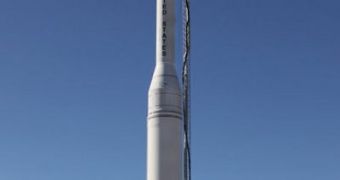Officials at NASA announced recently that upcoming satellite missions contracted to fly to space aboard the Taurus XL delivery system may not use this rocket after all. The decision is the result of last week's accident, which saw a climate-science spacecraft collapse into the ocean aboard this rocket.
After the disaster, Dulles, Virginia-based Orbital Sciences Corporation (OSC) officials said that they were confident the mishap would not affect their working relations with the American space agency.
But representatives from NASA said recently that they feel uncomfortable about closing new deals with OSC, given that the last two missions scheduled to launch on the Taurus XL rocket failed to reach orbit.
The Orbiting Carbon Satellite (OCS) was the first to be lost, back in 2009. Its instruments were to provide experts with insightful data on the Earth's carbon cycle, which would have contributed to improving climate models related to global warming.
An error in the rocket carrying OCS did not allow the nose cone fairing carrying the satellite to separate from the fourth stage of the rocket. The entire thing was too heavy, and moved too slow to reach orbit.
The second failure took place for the exact same reason, only last week. Another Taurus XL was carrying the Glory satellite, which was supposed to provide investigators with new data about the composition and origins of tiny, suspended atmospheric particles called aerosols.
These particles contribute significantly to dictating warming patterns. The spacecraft was also supposed to point another instrument at the Sun, and continue a long-term NASA monitoring study of the star.
Now, NASA is looking for alternatives for launching its Orbiting Carbon Observatory 2 satellite, which needs to fly to orbit in 2013. It was originally bound to launch on the OSC rocket, but now things are hazy, Universe Today reports.
“The bottom line is NASA will not fly in a launch vehicle that we do not have confidence in,” explained the program executive for the NASA Glory mission, Joy Bretthauer.
OSC is defending itself, saying that it did its best in ensuring the nose cone fairing would separate.
“We went into this flight confident that we had nailed the fairing issue,” explains the general manager of the OSC launch systems group, Ron Grabe. He is also the executive vice president of the group.
“We went so far as to completely change out the initiation system to a system that we use on one of our other vehicles, and in the intervening years that system flew successfully three times,”he added.
NASA is likely to make a decision on which rocket to use for OCO 2 soon. Keep an eye on this space for more details as things unfold.

 14 DAY TRIAL //
14 DAY TRIAL //